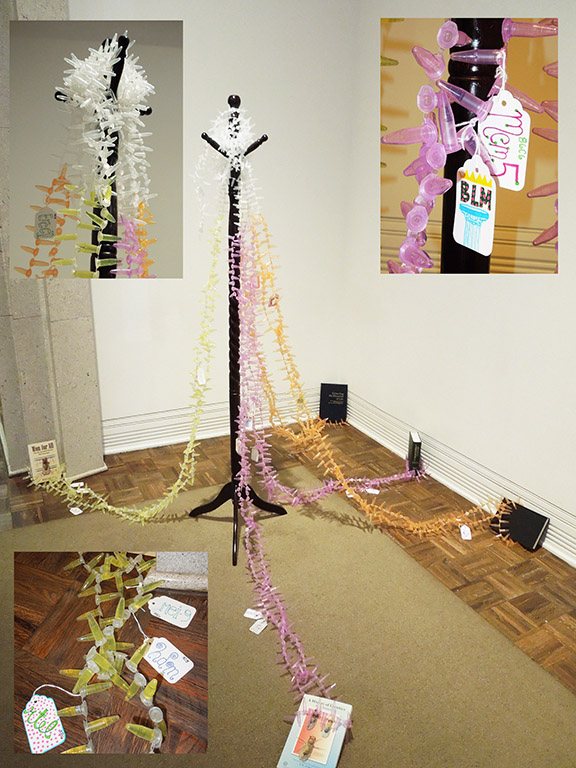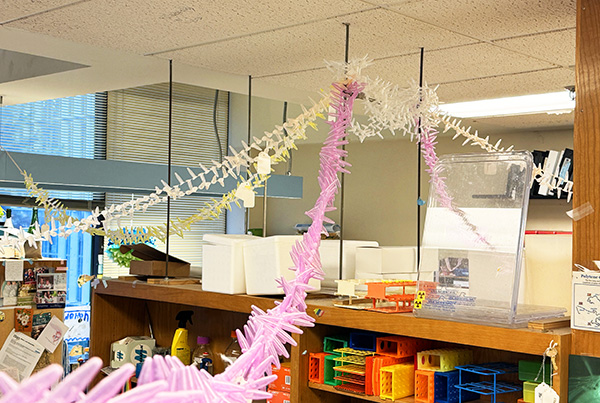
Polypropylenetenes
1999, 12ft x 12ft x 12ft x 12ft x 12ft x 1ft
used polypropylene microfuge tubes
The Sekelsky Lab
American, b. 1999
The adage that art imitates life is true with the piece Polypropylenetenes. Specifically, this piece imitates imitates the polytene
chromosomes of Drosophila melanogaster larval salivary gland nuclei (see this page
for a description of polytene chromosomes). Interconnected plastic microfuge tubes form the five long and one short chromosome arms that
radiate outward from the chromocenter. The piece further imitates chromosomes through its dynamic nature: Some days we
discover single-strand or double-strand breaks in the chains. Just as in the nucleus, this damage must be repaired accurately
to ensure that the correct sequence of tubes endures. Another parallel is seen in the close-up below, in which the plastic
genome contains the entire fly, or even several flies.
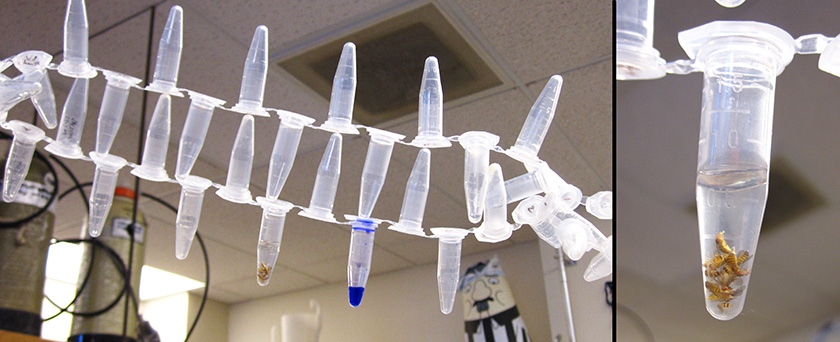
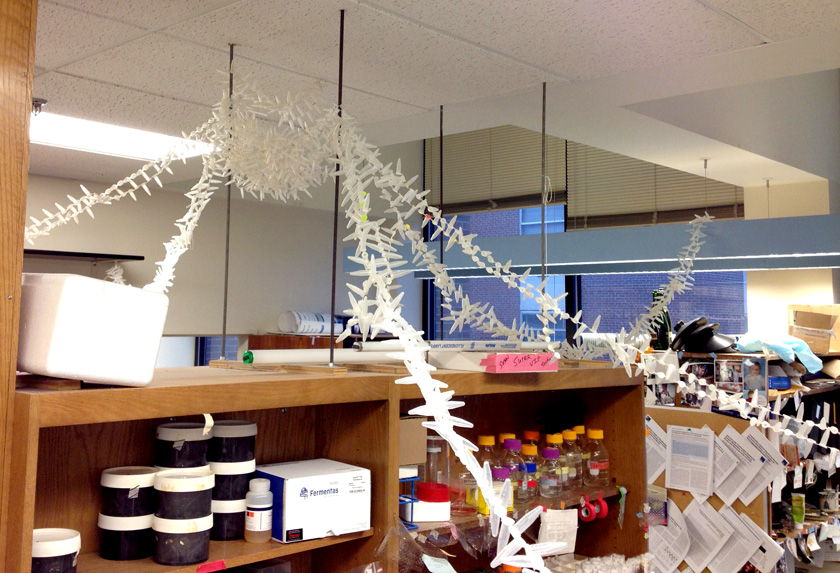
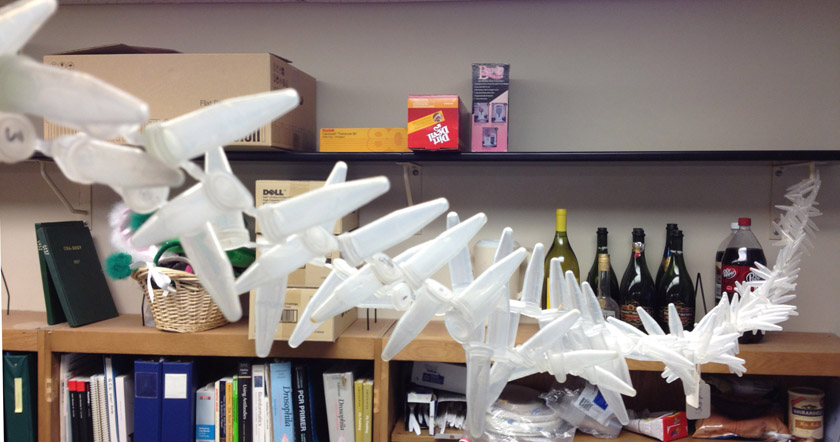
On May 17, 2013, this work was exhibited in the Ackland Art Museum
as part of the Art of Science exhibition. Rather than transport the original sculpture (the contents of which probably shouldn't leave a
lab environment), we did a temporary installation of a Polypropylenetenes 2.0 (below), including new tubes, some colored, others filled with colored agar.
Members of the lab made labels to mark their favorite genes.
